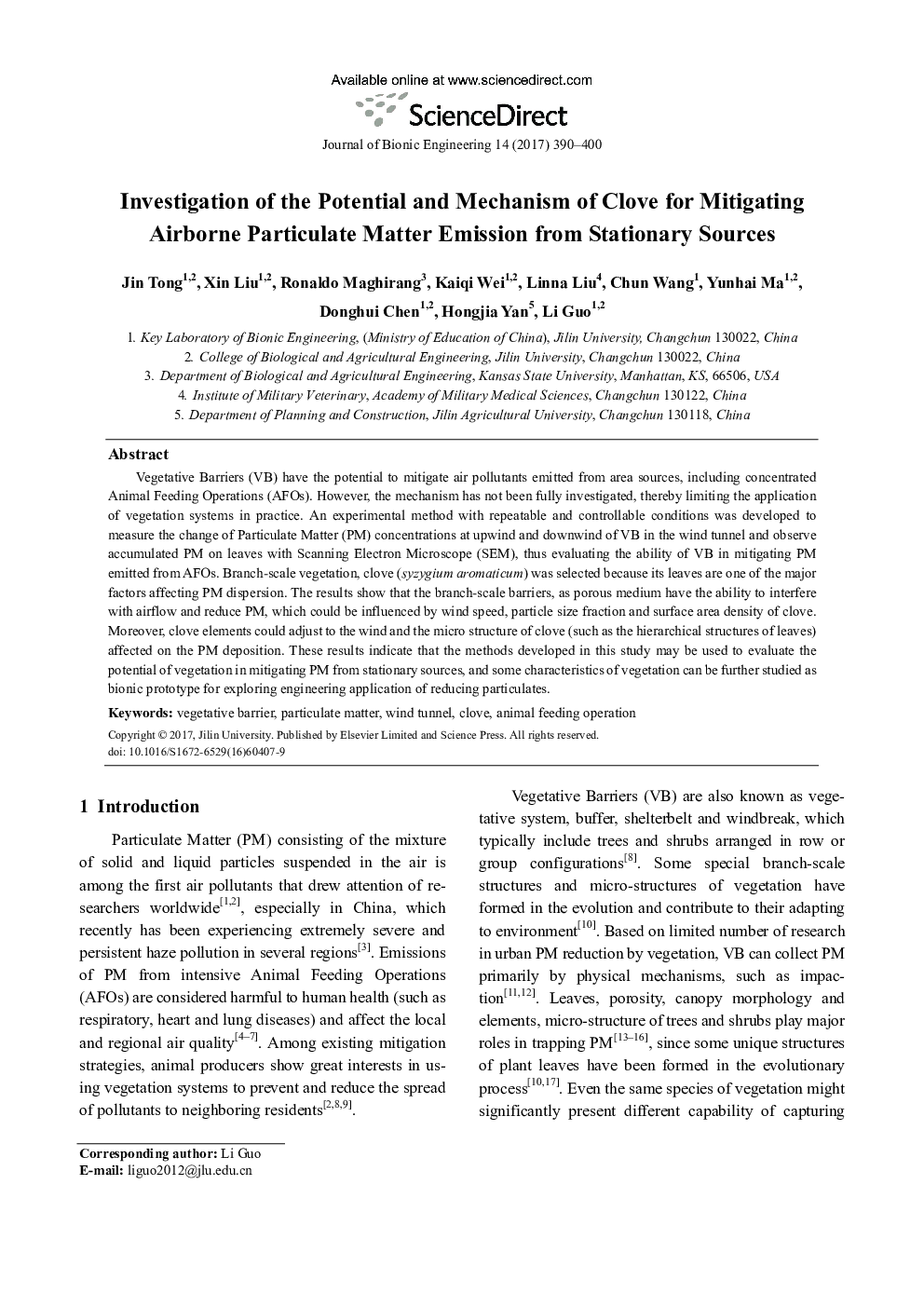| کد مقاله | کد نشریه | سال انتشار | مقاله انگلیسی | نسخه تمام متن |
|---|---|---|---|---|
| 7216496 | 1470201 | 2017 | 11 صفحه PDF | دانلود رایگان |
عنوان انگلیسی مقاله ISI
Investigation of the Potential and Mechanism of Clove for Mitigating Airborne Particulate Matter Emission from Stationary Sources
ترجمه فارسی عنوان
بررسی پتانسیل و مکانیزم گل میخ برای کاهش میزان انتشار ذرات معلق هوا از منابع ثابت
دانلود مقاله + سفارش ترجمه
دانلود مقاله ISI انگلیسی
رایگان برای ایرانیان
کلمات کلیدی
مانع گیاهی ذرات معلق، تونل باد، میخک، عملیات تغذیه حیوانی،
موضوعات مرتبط
مهندسی و علوم پایه
سایر رشته های مهندسی
مهندسی پزشکی
چکیده انگلیسی
Vegetative Barriers (VB) have the potential to mitigate air pollutants emitted from area sources, including concentrated Animal Feeding Operations (AFOs). However, the mechanism has not been fully investigated, thereby limiting the application of vegetation systems in practice. An experimental method with repeatable and controllable conditions was developed to measure the change of Particulate Matter (PM) concentrations at upwind and downwind of VB in the wind tunnel and observe accumulated PM on leaves with Scanning Electron Microscope (SEM), thus evaluating the ability of VB in mitigating PM emitted from AFOs. Branch-scale vegetation, clove (syzygium aromaticum) was selected because its leaves are one of the major factors affecting PM dispersion. The results show that the branch-scale barriers, as porous medium have the ability to interfere with airflow and reduce PM, which could be influenced by wind speed, particle size fraction and surface area density of clove. Moreover, clove elements could adjust to the wind and the micro structure of clove (such as the hierarchical structures of leaves) affected on the PM deposition. These results indicate that the methods developed in this study may be used to evaluate the potential of vegetation in mitigating PM from stationary sources, and some characteristics of vegetation can be further studied as bionic prototype for exploring engineering application of reducing particulates.
ناشر
Database: Elsevier - ScienceDirect (ساینس دایرکت)
Journal: Journal of Bionic Engineering - Volume 14, Issue 2, April 2017, Pages 390-400
Journal: Journal of Bionic Engineering - Volume 14, Issue 2, April 2017, Pages 390-400
نویسندگان
Jin Tong, Xin Liu, Ronaldo Maghirang, Kaiqi Wei, Linna Liu, Chun Wang, Yunhai Ma, Donghui Chen, Hongjia Yan, Li Guo,
